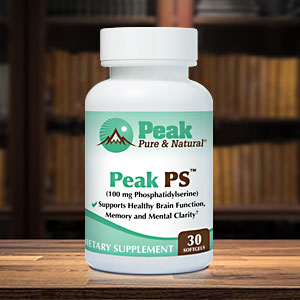Get Easy Health Digest™ in your inbox and don’t miss a thing when you subscribe today. Plus, get the free bonus report, Mother Nature’s Tips, Tricks and Remedies for Cholesterol, Blood Pressure & Blood Sugar as my way of saying welcome to the community!
Exercise: A powerful drug-free remedy for chronic anxiety

It’s no secret that exercise can help you feel better about yourself and your life. In fact, studies have proven the ability of regular physical activity to combat depression and put a smile on your face.
Yet, what if instead of, or in addition to depression, you’re living with anxiety?
Well, that answer has been harder to find, until now.
While we’ve all long believed that exercise can ease stress, whether it truly works for an issue as severe as chronic anxiety can be has been up for debate.
But that debate has been settled thanks to research at the University of Gothenburg.
Increasing intensity increases relief
For their study, the researchers recruited 286 participants, the majority of whom had lived with anxiety for at least 10 years. Then they randomly assigned each person to one of three groups: moderate exercise, strenuous exercise and a control group who only received advice on physical activity.
And the results were impressive — so impressive that both exercise groups, no matter their intensity, experienced significant relief from the anxiety that had plagued them for so long after just 12 weeks of regular physical activity.
According to the results, exercise increased the chances of symptom improvement for the moderate level group by a factor of 3.62. For the group doing strenuous exercise, the results were even better with a likelihood of improvement 4.88 times higher than the non-exercise group.
“There was a significant intensity trend for improvement — that is, the more intensely they exercised, the more their anxiety symptoms improved,” said the study’s first author, Malin Henriksson.
How much exercise is enough?
So what did the anxiety-clobbering exercise programs look like?
Well, both groups completed 60-minute training sessions three times a week, which included both cardio and strength training. They did a warm-up, followed by circle training around 12 stations for 45 minutes and then a cool-down and stretching.
Those working at the moderate level were asked to stick to an intensity that would help them reach approximately 60 percent of their maximum heart rate. However, working out at a strenuous level meant upping the workout to 75 percent of maximum heart rate.
Since both groups saw improvements in their anxiety levels, the decision for you may come down to which intensity level you’re more comfortable with.
More drug-free anxiety busters
In addition to exercise, there are a number of other drug-fee ways to calm anxiety, including:
- Taking probiotics – Probiotics are known to help regulate levels of certain neurotransmitters that in turn affect issues like anxiety and depression.
- Adding in prebiotics – A study by British researchers showed that just four weeks of daily galacto-oligosaccharides (GOS) prebiotic intake reduced anxiety and improved overall well-being.
- Eat more avocadoes – Foods like avocadoes and pistachios are packed with a compound known as beta-sitosterol, which has been found to regulate anxiety with none of the side effects that would go hand-in-hand with taking anti-anxiety medications.
- Phosphatidylserine – Called PS for short, this nootropic supports cognitive brain health, but research has also shown it can blunt the effects of stress by decreasing blood levels of the stress hormones ACTH, cortisol, epinephrine and norepinephrine.
So don’t let chronic anxiety continue to damage your mental health. Use regular moderate or high-intensity exercise, along with the tips above, to put an end to the stress that’s keeping your head spinning.
Editor’s note: Did you know that when you take your body from acid to alkaline you can boost your energy, lose weight, soothe digestion, avoid illness and achieve wellness? Click here to discover The Alkaline Secret to Ultimate Vitality and revive your life today!
Sources:
Anxiety effectively treated with exercise – University of Gothenburg













